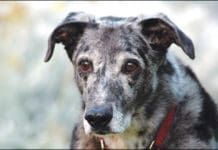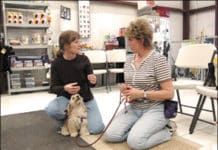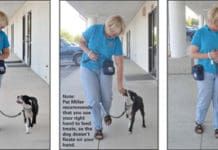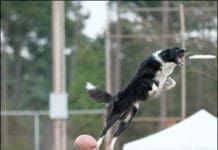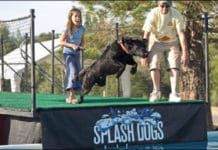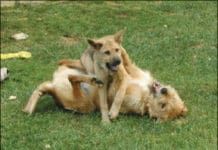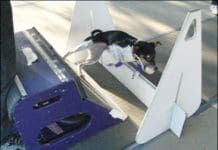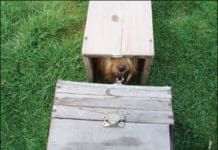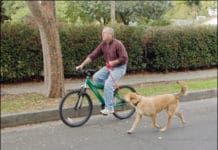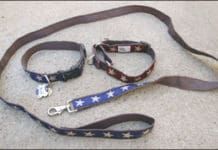Home Search
dog park - search results
If you're not happy with the results, please do another search
Has Your Senior Dog Started to Lose His Hearing?
If we're fortunate enough to have them live to old age, at some point, most of our canine companions begin to lose their hearing and may eventually be, for all intents and purposes, deaf. It's painful to watch a beloved dog become less and less responsive to his environment because he's unaware of what's going on around him, and even more so when it limits your ability to communicate with him. The thought of a hearing-impaired dog wandering off and not being able to hear your calls is frightening. Here are five things you can do if your dog's hearing isn't what it used to be.
How To Find The Best Dog Trainer For Your Dog
People have many questions when it comes to dog training: Lure-reward training or clicker training? Group classes or private lessons? Basic obedience or beyond? What type of trainer is best for dealing with your dog's behavior challenges? Finding the right trainer is an important piece of the training puzzle. Dog training is an unregulated industry; anyone can hang up a sign and instantly become a dog trainer. If you mix some decent Web-authoring skills with a college-level book on public relations, even yesterday's Fed-Ex clerk can have the Web presence of a seasoned dog training professional.
How to Train Proper Leash Walking – Pull Over!
One of the more frustrating experiences for positive dog trainers is watching their clients being dragged by their dogs across the parking lot toward their cars, just moments after training class is dismissed. “Dang,” we sometimes think, “Will they ever teach their dogs to walk politely on-leash? What part of ‘Don’t reinforce your dog for pulling!’ didn’t they hear?” Of course, it’s equally frustrating for dog owners when their dogs drag them. And the training solution – stopping every time the dog pulls – gets tiresome.
Canine Sports: Tracking
The sport of American Kennel Club (AKC) tracking started out as a stepchild to its competition obedience Utility Dog (UD) title. Although you needed to pass a separate tracking test to earn your UD title between 1936 and 1946, tracking garnered a one-paragraph description in the rules and regulations of the time. Fans of tracking pushed for changes in the rules as a result of increased understanding of scent work and, in 1947, tracking became a separate class. The Tracking Dog (TD) title was the only tracking title available until 1980 when the Tracking Dog Excellent (TDX) title was added.
Disc Dog Competitions
The cattle dog-mix races across the turf, his claws digging into the ground, pushing hard into his next stride, building momentum, faster, faster, faster. With a final turbo blast powered by his rear legs, he pushes off the ground and vaults into the air, seemingly weightless as he stretches his neck into the sky. A sudden twist of shoulders propels his torso and hips 180 degrees as he changes direction midair and snatches the prize from the air - a simple, round plastic disc. Eyes alight with the thrill of the chase and the kill (catch), he lands nimbly and races back to his handler. Can we do it again? Can we, can we? Yeah, we can. This is the sport of disc dog. It's been around since Frisbees became popular in the early 1970s and the players' dogs chased the players' errant tosses. When a bad toss resulted in a disc rolling on its side, that was fine by Fido.
Dock Diving: A Dog Jumping Competition
A Labrador leaps into a pool in a Splash Dogs contest, one type of dock jumping.
Probiotics and Dogs
Curly, a five-year-old Standard Poodle, eats the best food his human can afford. Raw chicken, rabbit, and venison are his favorites. Tina, his two-legged companion, switches the meats every few days, mixing the protein with some sweet potato, carrots, an occasional stalk of broccoli, and always a good fish oil supplement. Plus, to be sure that Curly is getting full nutritional benefit from every delicious bite, Tina always adds a sprinkling of a probiotic and digestive enzyme supplement as a final touch. Everything Curly eats is the best of the best: human-grade ingredients, no preservatives, no by-products. But somehow, despite all of the good lovin' and great food, Curly is a bit thin, won't put on weight, and his stool is sometimes dry making it hard for the poor guy to poop during his daily walks. Tina knows that something is amiss and she is worried. She was told that maybe the probiotics weren't active, so she tried several different brands. But nothing has improved. So what gives; is it that the probiotics don't work? Adding supplemental Lactobacillus acidophilus, Bifidobacterium bifidum, Lactobacillus bulgaricus, or other probiotic organisms to your dog's diet is almost always a good idea. This will support the resident microflora that are always present in Curly's gut, enhancing digestion and absorption of nutrients, supporting detoxification and elimination processes, and helping to boost his immune system.
Dog Fostering Programs
he was adopted by a perfect family."
High-Energy Canine Competitions
Woof, yap, scream, yodel, bark, yip. Go, go, go!” Dogs on the sidelines and in crates and exercise pens barking at the top of their lungs. Dogs tugging and growling, tugging and growling. Handlers yelling over the din to their teammates. Handlers recalling their dogs over jumps, H-e-r-e! Event officials blowing whistles and announcing the next race over bullhorns or speaker systems, and start-line lights and passing lights flashing on and off. Flyball is a cacophony of sights and sounds. It is exhilarating, over the top, adrenalized hyperstimulation. This is not a sport for the introverted, timid, or sound-sensitive dog or handler. The adrenalin level is off the charts and you can hear that from hundreds of yards away. The first time I experienced flyball was as a spectator at an obedience trial held at a park. Suddenly, shattering the decorum, was an ear-piercing scream followed by rabid barking. Certain that an obedience dog had left the ring and treed a critter, I raced over to watch. No critter. No mayhem. Just flyball. The teams had just set up for their first race and the dogs were ready. I had never seen dogs so keen to get going.
Earthdog, An Underground Dog Training Activity
As long as there have been farmers and hunters, there have been “earth dogs.” Hardy, scrappy little dogs helped hunters tree squirrels, run rabbits to ground, corner foxes in their dens, and clear vermin from dwellings. As often happens, humans found a way to create competitive games from dogs’ natural abilities. For terriers and Dachshunds, a sport is born. Earthdog! Get that rat! As early as 211 B.C., mention was made of tiny rough-coated dogs used to follow animals into their burrows. Later, in the 1576 book De Canibus Anglicis, by Johannes Caius, the use of terriers was described in detail. In 1935, after many years of friends gathering together to test their dogs’ capabilities against those of their friends’ dogs, the Dachshund Club started offering trials modeled after German training for fox and badger hunting. This included building underground tunnels up to 50 feet long, with twists and turns along the way that required dogs to make decisions about which way to go to find their quarry. And it’s dark down there! In 1941 the Sealyham Terrier Club issued the first “working certificate,” which outlined requirements for dogs to search out woodchucks. In 1971 the American Working Terrier Association (AWTA) started artificial den trials in the U.S. By 1994, the American Kennel Club had launched its Earthdog program.
Training Your Newly Adopted Dog
I have had a number of dogs over the years, but Otto is actually the very first dog that I’ve gotten as a co-owner. A former boyfriend paid the $40 or $50 that a Bodega, California, sheep rancher wanted for my heart/soul dog, Rupert, way back in 1989, but the puppy was a birthday present for me; Rupe was always my dog. He stuck close by my side through the breakup of that relationship and the next few, too. When Brian (the man who later became my husband) came on the scene, he and Rupert formed a bond, but still, Rupe was mine. Later, a summer of dog-sitting my sister Sue’s long-haired Chihuahua, Mokie, turned into a several-year stay. Mokie has since gone on to live with my sister Pam, who won’t ever give him up; Brian was more than happy when I did so. He tolerated Mokie, but never fully embraced the idea of a yappy little house-dog, no matter how smart and cute. So, while Brian and I have shared a home since 1996, we have never truly shared full ownership of a dog, like we do now. I selected Otto from a shelter, but Brian was the one who gave the signal that it was time for us to get a dog. When Brian and I got married, I kept my own last name, but Brian wanted to be sure that Otto took his surname, and even made sure the dog’s full name (“Otto Maddock”) was engraved on his ID tag. And Brian has been a real champ about sharing dog-care duties with me.
Nocturnal Dogs
and matching leash all get softer with time and laundering. I like the extra large D-ring for snapping the leash onto.


